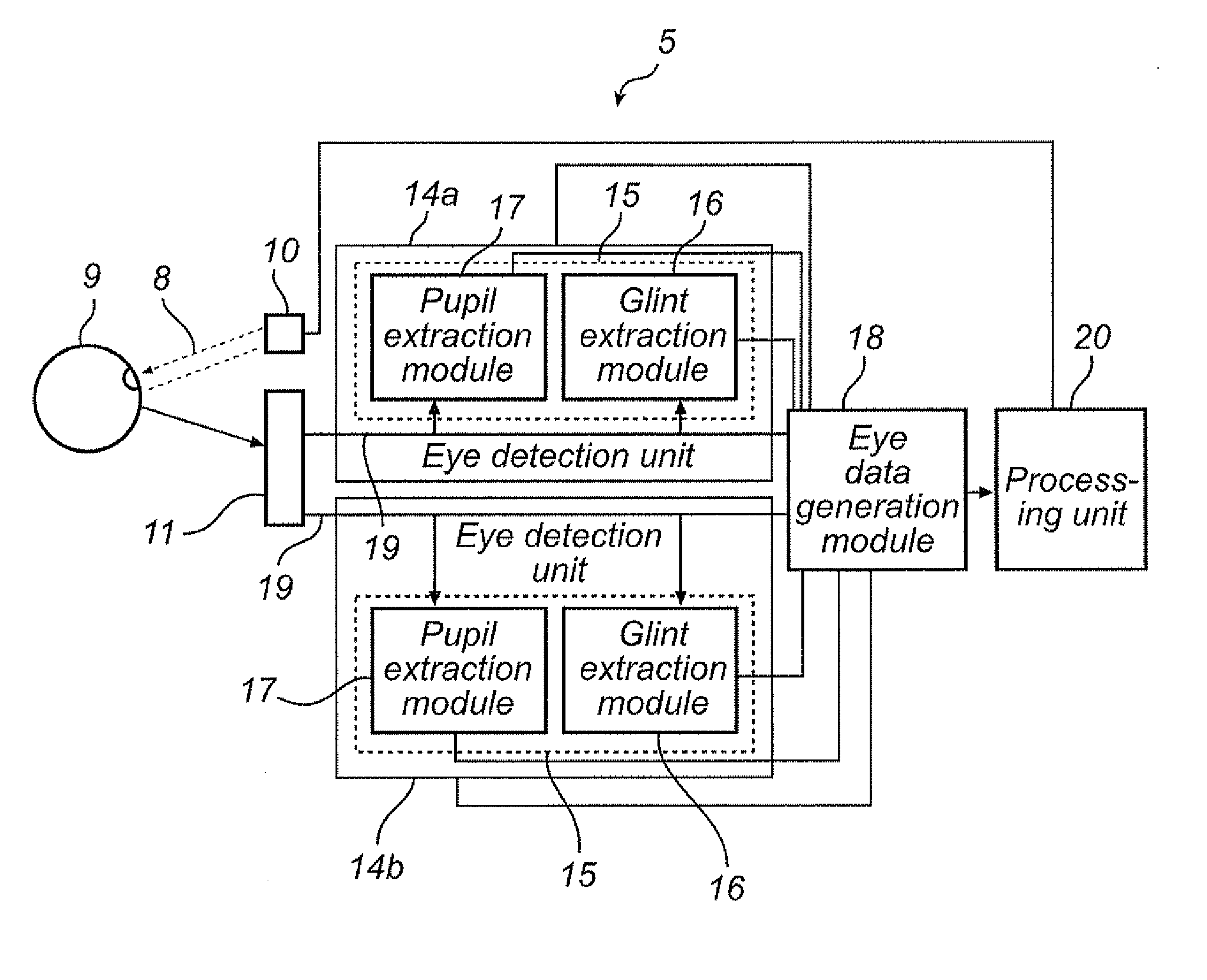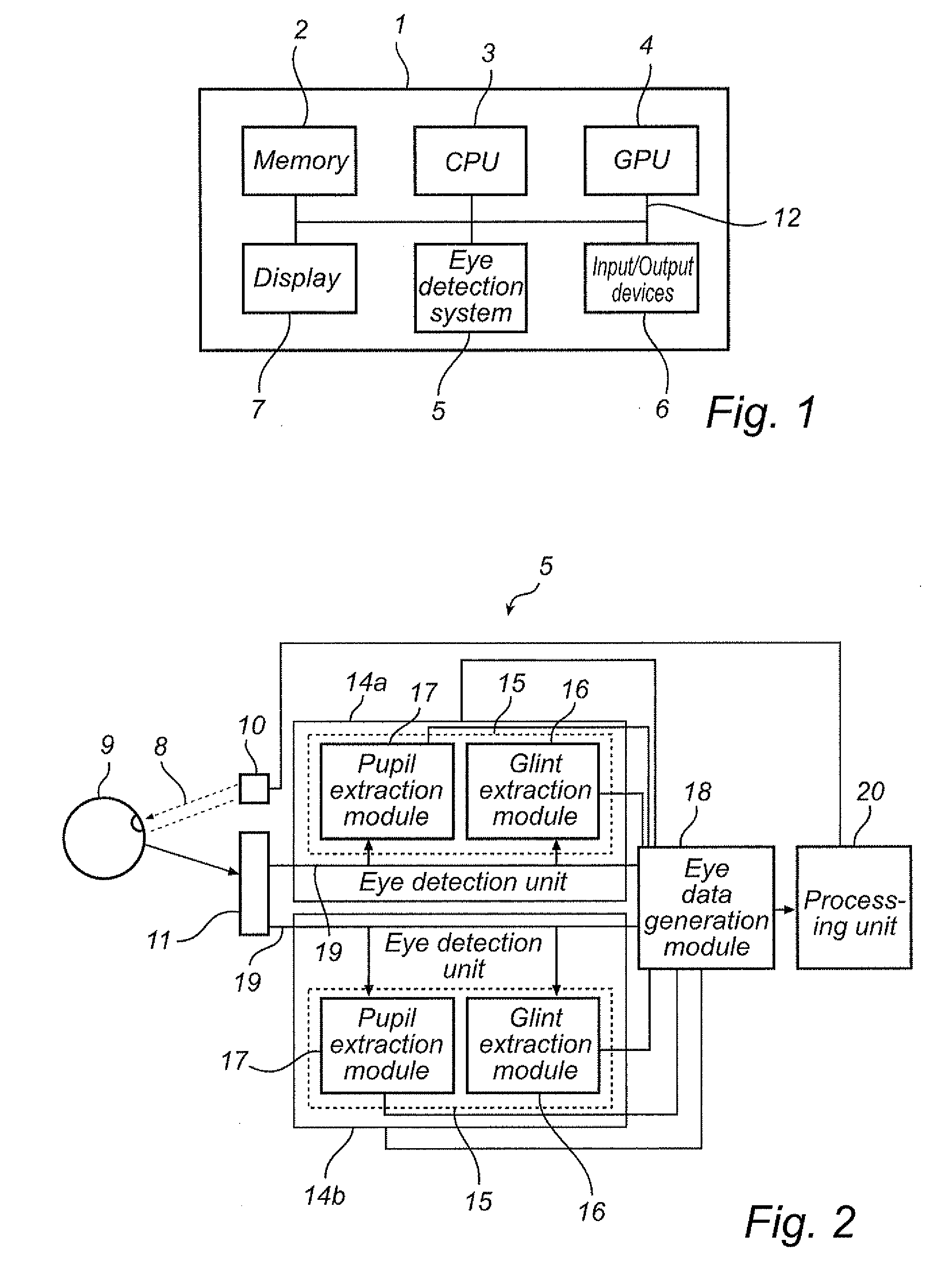Eye detection unit using sequential data flow
a data flow and eye detection technology, applied in the field of eye detection systems and methods, can solve the problems of increasing power consumption, large, expensive, complicated solution, and inefficient use of computing power and power, and achieve the effects of reducing power consumption, reducing latency, and increasing frame ra
- Summary
- Abstract
- Description
- Claims
- Application Information
AI Technical Summary
Benefits of technology
Problems solved by technology
Method used
Image
Examples
Embodiment Construction
[0035]The present invention relates to eye detection systems and methods. The embodiments disclosed herein are merely exemplary or representative of the present invention. The present invention is not to be limited to the specific disclosures presented herein.
[0036]With reference first to FIGS. 1 and 2, an eye detection system according to the present invention implemented in a computer will be discussed. The system is, for example, capable of determining the point on a monitor or screen at which the computer user is looking / gazing. The determination of the point on a monitor or screen at which the computer user is looking / gazing is performed by tracking the eyes of the user and in particular by determining the gaze angles of the eyes and the position of the eye relatively the monitor. However, the algorithms for the tracking of the eyes and for the determining the gaze angles is not part of the present invention and will not be described in detail herein. The, eye detection system ...
PUM
 Login to View More
Login to View More Abstract
Description
Claims
Application Information
 Login to View More
Login to View More - R&D
- Intellectual Property
- Life Sciences
- Materials
- Tech Scout
- Unparalleled Data Quality
- Higher Quality Content
- 60% Fewer Hallucinations
Browse by: Latest US Patents, China's latest patents, Technical Efficacy Thesaurus, Application Domain, Technology Topic, Popular Technical Reports.
© 2025 PatSnap. All rights reserved.Legal|Privacy policy|Modern Slavery Act Transparency Statement|Sitemap|About US| Contact US: help@patsnap.com



